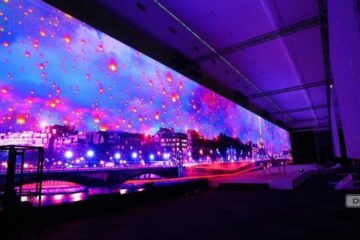How Are LED Panels Manufactured?
LED panels have become a popular lighting solution for offices, retail spaces, and homes due to their energy efficiency, slim design, and long lifespan. But have you ever wondered how these modern lighting systems are made? The manufacturing process of an LED panel involves multiple precise steps, combining advanced electronics with careful assembly.
In this article, we’ll walk through the key stages of LED panel production.
1. Design and Planning
The process begins with product design. Engineers determine:
- Panel size and shape (square, rectangular, or custom).
- Brightness levels (measured in lumens).
- Color temperature (warm, neutral, or cool white).
- Energy efficiency requirements.
Once the design is finalized, detailed schematics guide the manufacturing process.
2. LED Chip Selection
The heart of any LED panel is the LED chip. Manufacturers select chips based on:
- Light output and efficiency.
- Color rendering index (CRI), which affects how natural colors appear.
- Durability and heat resistance.
High-quality LED chips ensure consistent lighting and long service life.
3. PCB (Printed Circuit Board) Preparation
LEDs are mounted onto a printed circuit board (PCB), usually made from aluminum for better heat dissipation. The process includes:
- Applying solder paste onto the PCB.
- Placing LED chips and other components using automated pick-and-place machines.
- Reflow soldering, where the board is heated in a special oven to secure components in place.
This forms the electrical backbone of the LED panel.
4. Light Diffuser and Guide Plate
To ensure soft, uniform illumination, LED panels use:
- Light Guide Plate (LGP): A transparent acrylic or polycarbonate sheet etched with micro-dots that distribute light evenly.
- Diffuser Sheet: Placed on top of the LGP to eliminate glare and create a smooth lighting effect.
This step is critical to avoid visible bright spots and ensure balanced illumination.
5. Frame Assembly
The aluminum frame not only gives the panel structure but also helps dissipate heat. The frame is:
- Cut and shaped to fit the panel size.
- Coated or anodized for durability.
- Assembled around the LED module and light guide components.
A strong frame ensures both protection and efficient thermal management.
6. Power Supply Integration
LED panels require a driver or power supply to convert standard electrical current into the low voltage DC power that LEDs need. The driver is:
- Matched to the panel’s wattage and voltage.
- Tested for efficiency and safety compliance.
- Integrated into the panel or designed as an external unit.
7. Quality Control and Testing
Before reaching the market, each LED panel undergoes rigorous testing:
- Photometric testing (brightness, color temperature, CRI).
- Electrical safety checks.
- Heat management testing to prevent overheating.
- Aging test, where panels run for hours to ensure reliability.
Only panels that meet strict standards are packaged and shipped.
Conclusion
The manufacturing of LED panels is a combination of precision engineering, advanced electronics, and careful assembly. From LED chip selection to final quality testing, each step ensures the product delivers efficient, uniform, and long-lasting lighting.
This attention to detail explains why LED panels have become one of the most trusted and versatile lighting solutions worldwide.




0 comentário